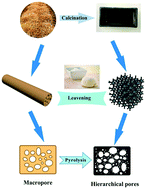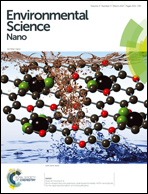One-pot synthesis of porous carbon foam derived from corn straw: atrazine adsorption equilibrium and kinetics†
Abstract
Hierarchically porous carbon foams (PCFs) demonstrate great potential for removal of atrazine from aqueous solutions owing to their large surface area, huge pore volume and interconnected hierarchically structured pores. The strategies for building PCFs from corn straw using a simple one-pot approach are challenging. PCFs with three-dimensional (3D) hierarchical pores consisting of micro-, meso- and macropores are fabricated via mixing biomass with NaHCO3 followed by heat treatment. The as-prepared PCFs possess large specific surface areas (up to 1892 m2 g−1 with a high pore volume of 0.845 cm3 g−1) and share rich functional groups on their surface contributing to the enhancement of the PCFs' adsorption capacity. Langmuir and Freundlich models are adopted to interpret the adsorption behavior of atrazine and the modified Freundlich and intraparticle diffusion (IPD) models are employed to describe the dynamics of adsorption. A developed adsorbent with a green preparation method and low cost compared to commercial carbon exhibits better efficiency for atrazine removal than adsorbents reported in the literature.



 Please wait while we load your content...
Please wait while we load your content...